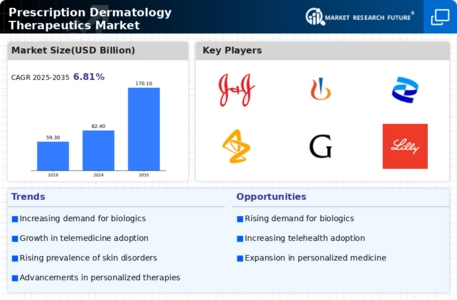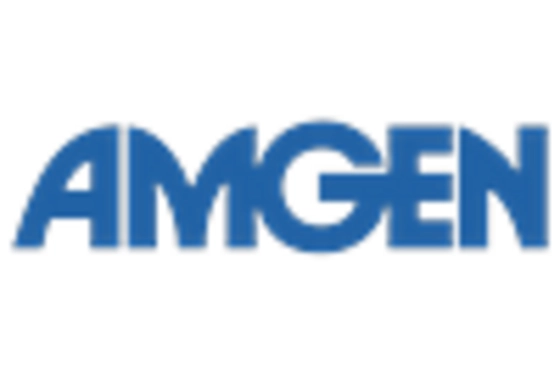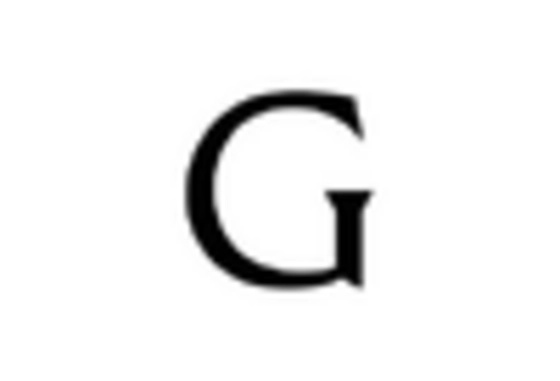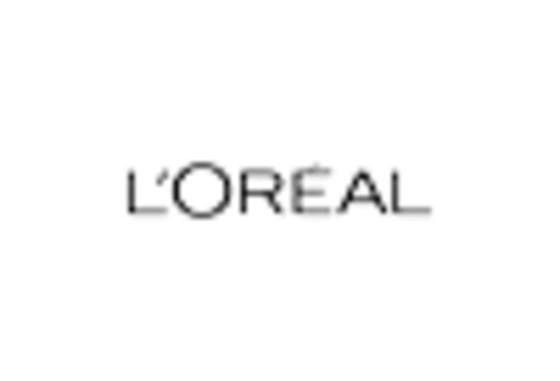Advancements in Drug Development
Innovations in drug development methodologies, particularly in the realm of biologics and targeted therapies, seem to be significantly influencing the Prescription Dermatology Therapeutics Market. The introduction of novel therapeutic agents, such as monoclonal antibodies and small molecules, has transformed treatment paradigms for various skin conditions. For instance, the approval of new biologics for psoriasis has led to a marked increase in treatment options, enhancing patient outcomes. The market for dermatological therapeutics is projected to witness substantial growth, with estimates suggesting a compound annual growth rate (CAGR) of over 7% in the coming years. This trend indicates a robust pipeline of new therapies that could reshape the landscape of dermatological care.
Growing Awareness of Skin Health
The increasing awareness of skin health and the importance of early intervention for skin disorders appears to be a driving force in the Prescription Dermatology Therapeutics Market. Educational campaigns and initiatives aimed at promoting skin health are likely to enhance public understanding of various skin conditions, leading to earlier diagnosis and treatment. This heightened awareness may result in a greater willingness among patients to seek medical advice and pursue prescription therapies. Furthermore, as healthcare providers emphasize the significance of proactive skin care, the demand for effective dermatological treatments is expected to rise. This trend could potentially lead to a more informed patient population, ultimately driving growth in the market for prescription dermatology therapeutics.
Increasing Prevalence of Skin Disorders
The rising incidence of skin disorders, such as psoriasis, eczema, and acne, appears to be a primary driver for the Prescription Dermatology Therapeutics Market. According to recent estimates, skin diseases affect a substantial portion of the population, with psoriasis alone impacting approximately 2-3% of individuals worldwide. This growing prevalence necessitates the development and availability of effective therapeutic options, thereby propelling market growth. As healthcare providers increasingly recognize the need for specialized dermatological treatments, the demand for prescription medications is likely to surge. Furthermore, the increasing awareness of skin health and the psychological impact of skin conditions may further contribute to the market's expansion, as patients seek effective solutions to manage their conditions.
Rising Demand for Aesthetic Dermatology
The growing interest in aesthetic dermatology, including treatments for conditions such as acne scars, wrinkles, and pigmentation disorders, appears to be a significant driver for the Prescription Dermatology Therapeutics Market. As consumers increasingly prioritize skin appearance and overall aesthetics, the demand for prescription-based treatments is likely to rise. This trend is further supported by the increasing availability of advanced therapeutic options, including laser treatments and chemical peels, which often require prescription medications for optimal results. Market analysts project that the aesthetic segment of dermatology will continue to expand, potentially leading to a notable increase in the overall market size. The intersection of medical and aesthetic dermatology may create new opportunities for growth within the industry.
Regulatory Support and Approval Processes
The evolving regulatory landscape surrounding dermatological therapeutics appears to play a crucial role in shaping the Prescription Dermatology Therapeutics Market. Regulatory agencies are increasingly streamlining approval processes for new dermatological drugs, which may facilitate faster access to innovative treatments for patients. This trend is particularly evident in the expedited approval pathways for breakthrough therapies, which can significantly reduce the time from development to market. As a result, pharmaceutical companies are likely to invest more in research and development, anticipating quicker returns on their investments. The supportive regulatory environment may also encourage the entry of new players into the market, fostering competition and ultimately benefiting patients with a wider array of treatment options.

















Leave a Comment